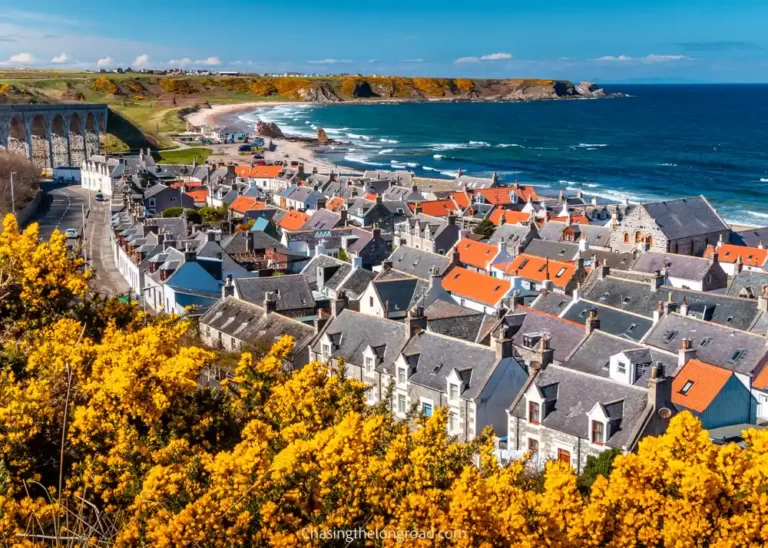Steeped in hundreds of years of captivating history, Edinburgh Castle possesses a certain magical charm that makes it one of the best castles in Scotland. Strategically placed over an extinct volcano that erupted millions of years ago, Edinburgh Castle has been there since the early 12th century.
From the royal residence to a mighty military stronghold to prison – It played a pivotal role in shaping Scotland’s past. Since 1985 it has been designated a UNESCO World Heritage Site.
Taking a meander around the cobbled streets of this fortress to discover its hidden stories is one of the most epic things to do in Edinburgh.
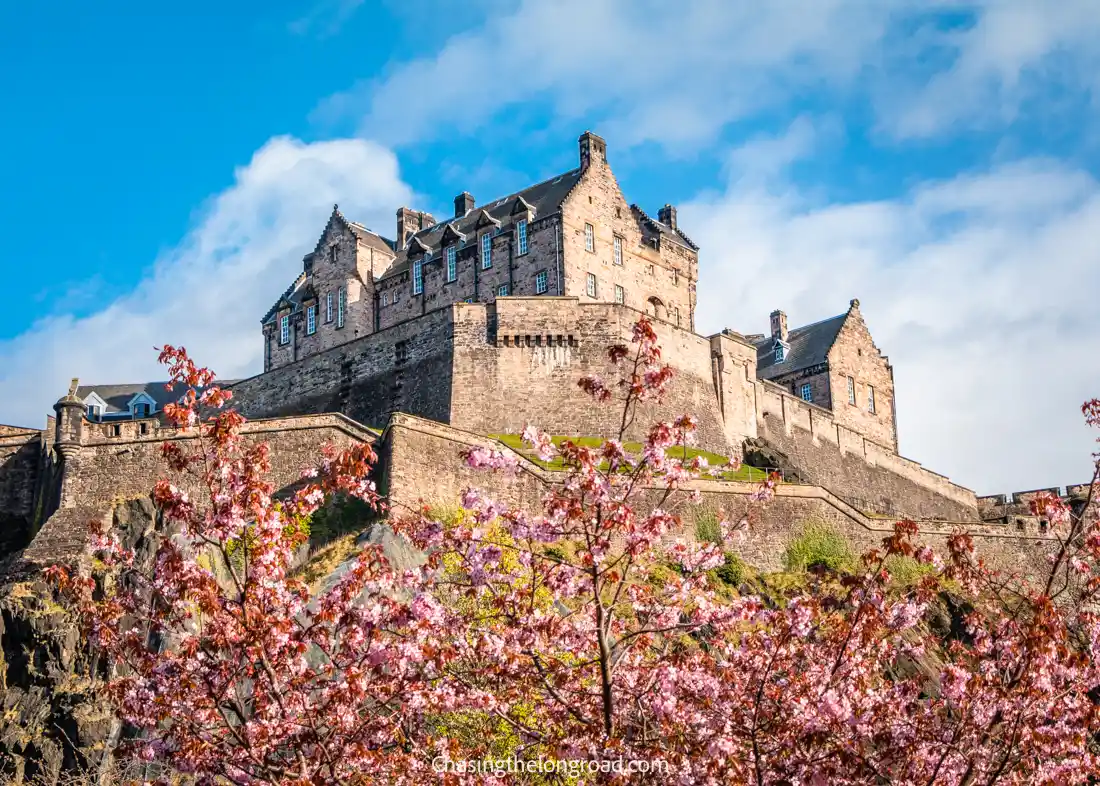
Visitors are welcome to explore the Royal apartments, the famous royal regalia known as the Honours of Scotland and the museums of Edinburgh Castle – but be careful! You might run into the castle’s mischievous little ghost, a lone piper, who is rumoured to still reside within this wall.
Its medieval charm lures more than 2.2 million tourists a year. The towering structure also acts as a great vantage point to admire the breathtaking views of Edinburgh.
Also, Edinburgh Castle is the venue of the spectacular Royal Military Tattoo in August every year.
Here’s everything you need to know about this historic attraction before you make your trip.
Where is Edinburgh Castle?
As the name suggests, Edinburgh Castle is located in the historic capital city of Scotland, Edinburgh. It sits proudly atop an ancient extinct volcanic plug called Castle Rock at the top of Royal Mile – one of the oldest thoroughfares connecting two royal residences – the Edinburgh Castle and the Palace of Holyroodhouse. Hence the name.
Also, it is only a mile away from two other sites in the city created by similar volcanic activities – Calton Hill and Arthur’s Seat.
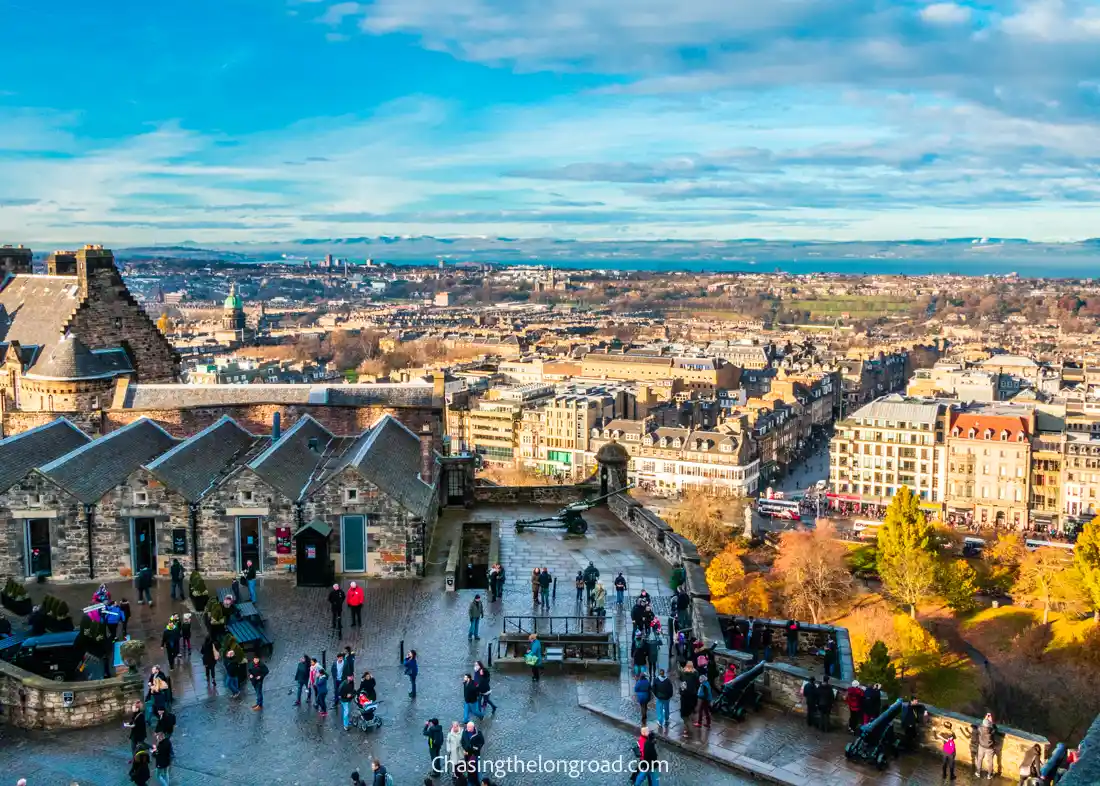
The fortress can only be accessed from the eastern side. The rocky cliffs to the south, west, and north are too steep.
Visitors can buy entry tickets at the ticket counter inside the fortress next to the main gate or online.
When was Edinburgh Castle Built?
The origins of Edinburgh Castle can be traced back to the Iron Age. Archaeologists have reported that the ancient Votadini people built a hill fort on Castle Rock to fend off invaders. They lived in this area for thousands of years ago.
The geological feature of this area is even older than that. Castle Rock was formed from a volcanic eruption at the start of the Carboniferous Period several hundred million years ago.
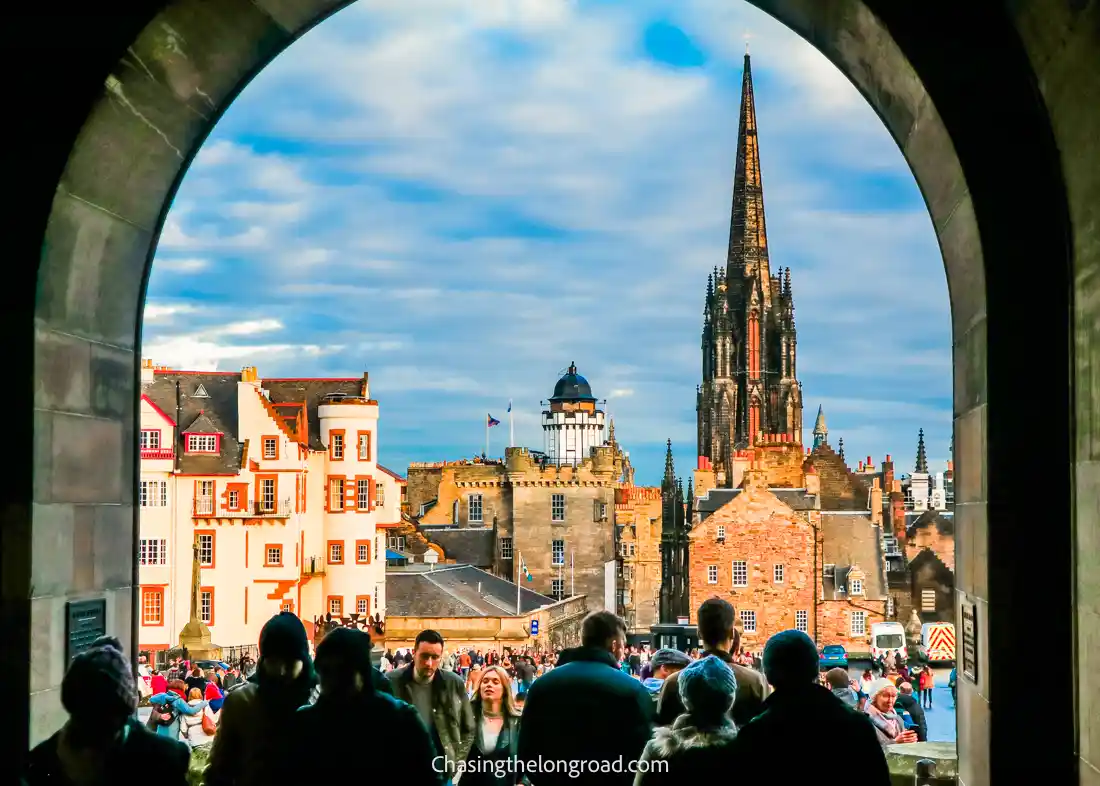
But the formidable structure of Edinburgh Castle that we see today was built in 1103 by the monarch of Scotland, King David I, including the St. Margaret’s Chapel, the oldest surviving building in the city.
The king named the chapel after his beloved mother, Saint Margaret. She died here upon hearing the news of her husband, King Malcolm III, being killed on a battlefield.
That makes Edinburgh Castle over 900 years old. It is one of the oldest fortifications in the United Kingdom. Over the centuries, it has seen many battles and sieges and has been destroyed and rebuilt numerous times.
Why was Edinburgh Castle Built?
The reason behind building this magnificent fortress over Castle Rock was obviously its strategic location. The 80 metres high sheer cliffs guarded it against foreign invaders. Also, its elevated position was advantageous to spot potential attacks and military threats from a distance.
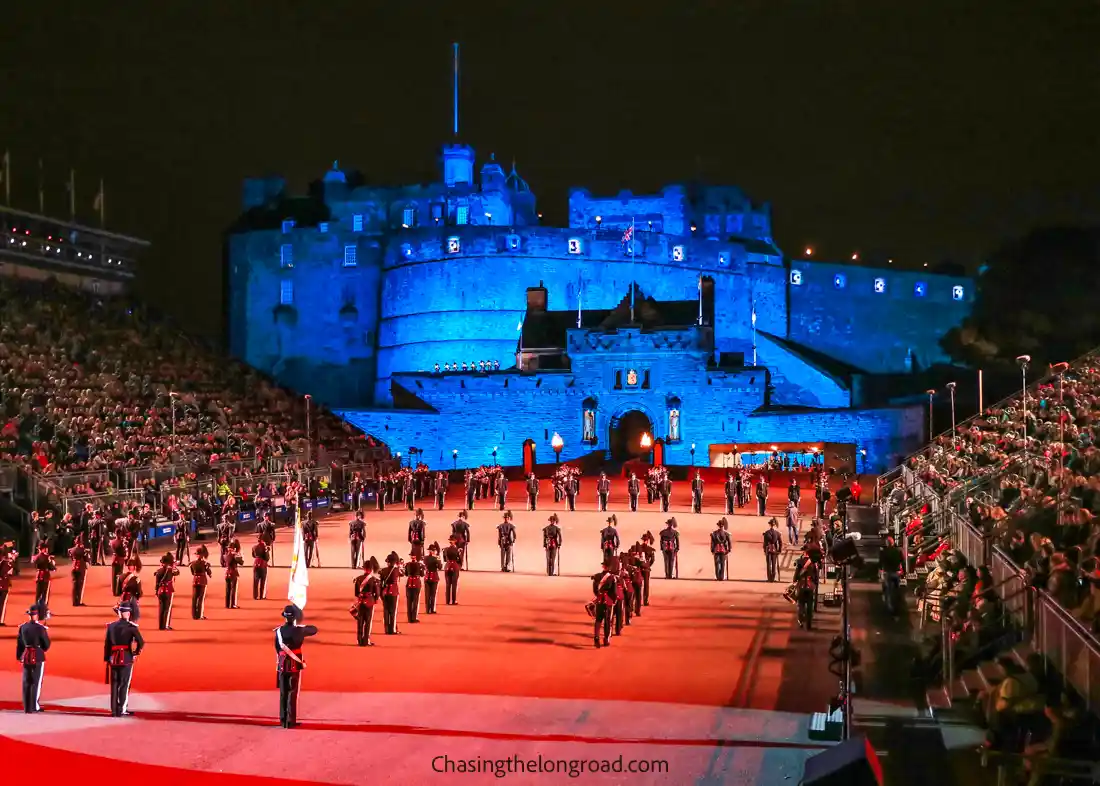
Edinburgh Castle is one of the most attacked places in the UK. There were 23 recorded attempts to siege it. The control of the fortress changed hands numerous times throughout history between the English and the Scottish.
It served as a royal residence from the time of King David I in the 12th century until the mid-17th century. Mary Queen of Scots gave birth to his son James, the future king of Scotland and England.
Best Places to Photograph Edinburgh Castle
You can spot the imposing structure of Edinburgh Castle from different parts of the city. It is one of the most famous attractions in all of Scotland. This mighty fortress has dominated the city skyline for centuries.
Here are a few of our favourite places to admire this iconic landmark. All of them are free to visit.
Just a short walking distance from the castle esplanade, Calton Hill is one of the most-visited attractions in Edinburgh. The awe-inspiring panoramic vista from the top will leave you spellbound.
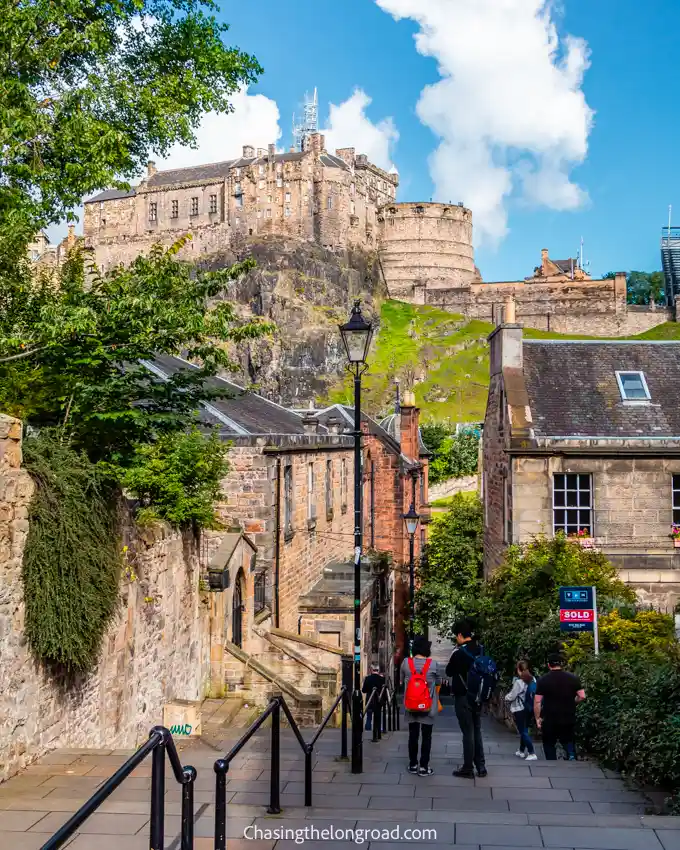
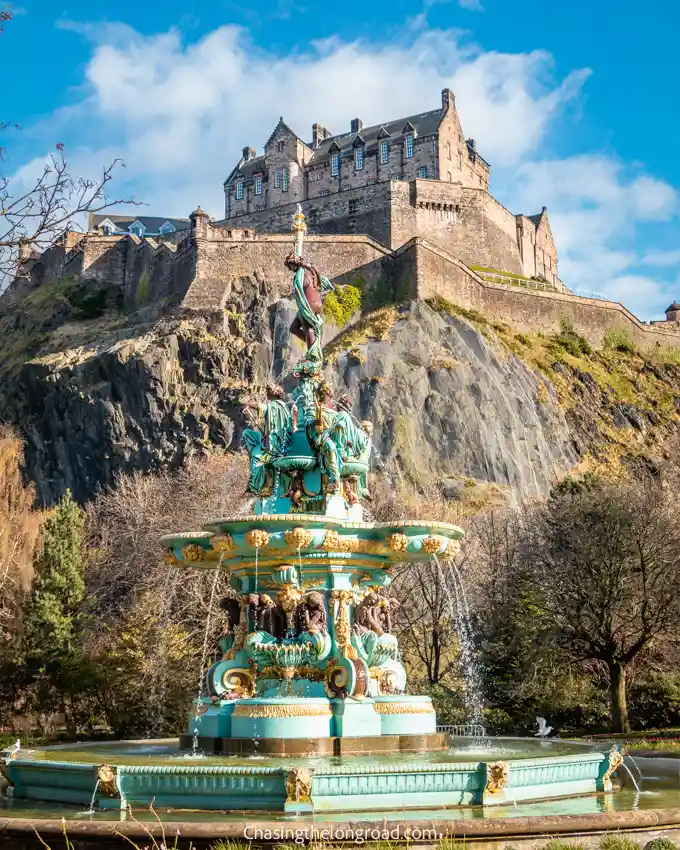
Another popular place to see the best view is Salisbury Crags and Arthur’s Seat. Although the climb is moderate, the view is extremely rewarding. Sitting at 251 metres, Arthur’s Seat is one of the best walks in Edinburgh.
Popular with local photographers, the Vennel staircase in Grassmarket is a brilliant place to get a unique perspective of Edinburgh Castle. Lastly, we absolutely love the dramatic scenery from the West Princes Street Garden with the stunning Ross Fountain.
Inside Edinburgh Castle
This sprawling complex houses the Scottish Crown Jewels, the Stone of Destiny, Mons Meg, Great Hall, St Margaret’s Chapel and a few museums and memorials. Witness the firing of the One O’Clock Gun.
We will suggest spending at least two hours to properly appreciate the fascinating history of this place.
The Honours of Scotland
Once used at the crowning of kings and queens of Scotland, the Honours of Scotland are displayed today in the Crown Room of the Royal Palace in Edinburgh Castle.
The Crown of Scotland, the Sceptre and the Sword of State – are collectively called the Honours. It is the oldest sovereign regalia in the United Kingdom. Unfortunately, photography is prohibited in this room.
During the coronation of Mary Queen of Scots, the Honours were first used together in 1543. They have quite a turbulent past and were removed from Edinburgh Castle a few times to keep it safe from invading troops.
Before the Treaty of Union between Scotland and England in 1707, the Honours were placed in the Parliament of Scotland to signify the monarch’s presence.
After 1707, they were returned to Edinburgh Castle and locked away to be forgotten for over a century. Finally, in 1818, they were rediscovered by eminent Scottish writer Sir Walter Scott.
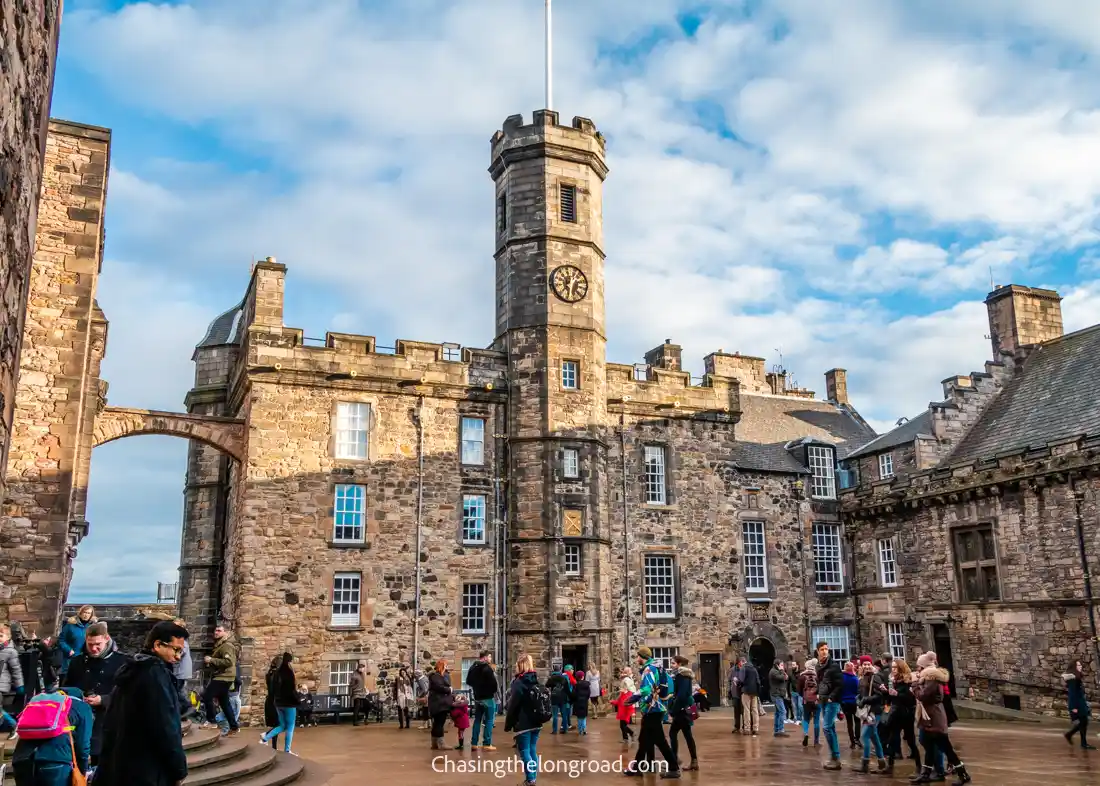
Great Hall
Built to host lavish royal ceremonies and social events, the Great Hall was constructed during the reign of King James IV and was completed in the early 16th century.
He installed the infamous spy hole called the ‘laird’s lugs’ above the fireplace to eavesdrop on conversations between his generals and ministers in his absence.
Mary Queen of Scots threw a banquet here to celebrate her return from France in 1561.
Throughout history, the Great Hall went through many transformations. It worked as a military barrack and later as a hospital for wounded soldiers in the 19th century.
Finally, it was restored in the late 19th century. Today, it displays an impressive collection of armouries and weapons.
The bright red-coloured room is decorated with wooden panels and paintings. Also, admire the beautiful Hammer-beam roof. The wooden beams came all the way from Norway. It is only one of two remaining medieval roofs in Scotland.
St. Margaret’s Chapel
Widely regarded as the oldest surviving structure in Edinburgh Castle and the city, St. Margaret’s Chapel was built around 1130 by King David I in memory of his mother, Queen Margaret, who died at this place in 1093. The Queen was famous for her pious nature and charitable works. She was canonised in 1250 by Pope Innocent IV.
The chapel was a private place to worship for the royal family members. When Robert the Bruce captured Edinburgh Castle in 1314, he destroyed most of the citadel, leaving the chapel intact.
After the Scottish Reformation, the building was left abandoned and was used for storing military arsenal. Later in the 1850s, with the encouragement of Sir Daniel Wilson, significant restorations took place. The ornate arches are original, while other features are more recent.
Today the chapel is still operational and regularly performs religious services, including christenings and weddings.
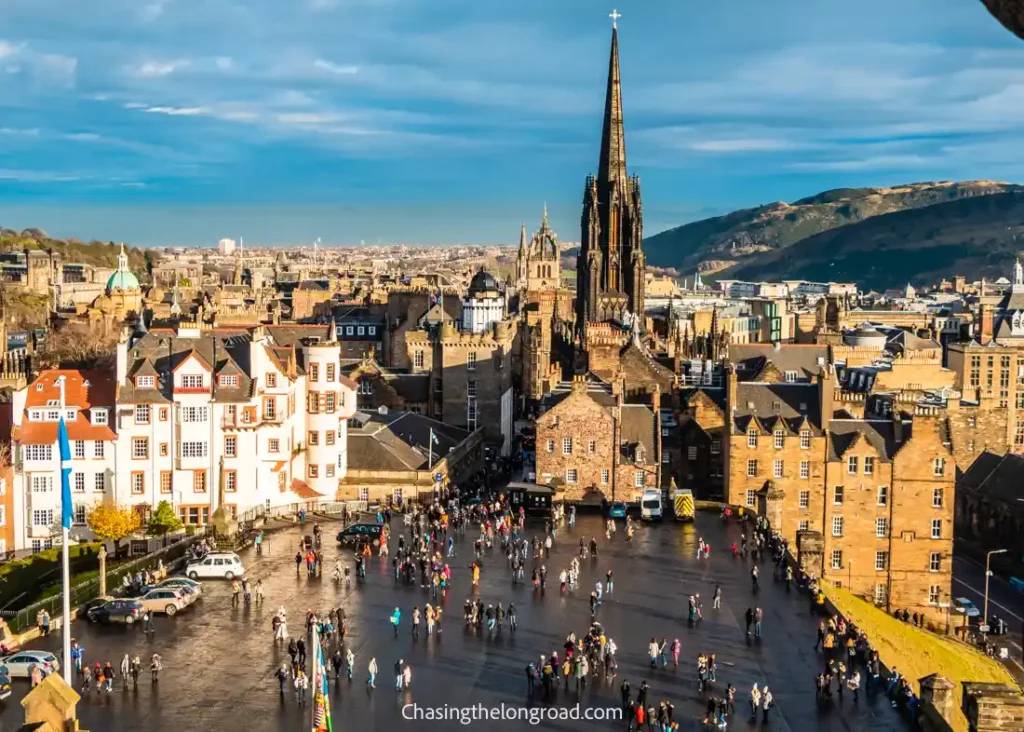
The Royal Palace
Many crucial events in Scottish history occurred within its historic walls. The Royal Palace in Edinburgh Castle was the home of the Stewart monarchs of Scotland. The beautifully ornate ceilings and the decorated wooden panels show the grandeur of this place.
You can visit the small room where Mary Queen of Scots gave birth to the future King James VI in 1566. He was one of the most long-standing kings of Scotland. During his 22-year rule, he successfully united the kingdoms of England and Scotland.
King Charles I was the last emperor to stay at the palace in 1633.
On the first floor, you will find the famous Honours of Scotland, the Scottish Crown Jewels and the Stone of Destiny.
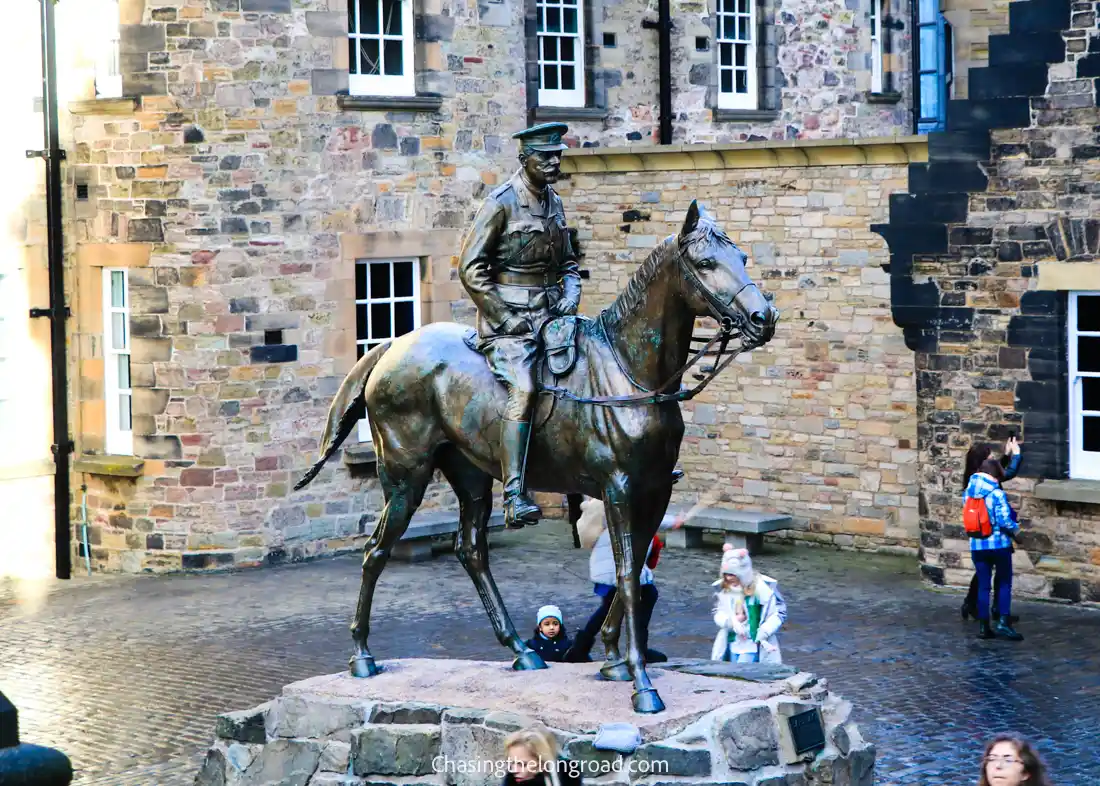
National War Museum
If you want to learn about the military history of Scotland, National War Museum is a must-visit place. Entry to this museum is included in your Edinburgh Castle ticket.
It is located near Hospital Square. But before going inside, see the bronze Equestrian Statue of Earl Haig, a senior officer of the British Army during the First World War.
Opened in 1933 in a former artillery storehouse, this gallery showcases the daily life of Scots who fought bravely for their country. You can discover various historic artefacts used by the Scottish forces over the span of around four hundred years – an extensive collection of uniforms, souvenirs, weapons, medals, personal possessions and letters used by Scottish soldiers.
Also, watch out for Robert Gibb’s famous painting – The Thin Red Line. It shows the Highlander Regiments fighting against the Russian cavalry at the Battle of Balaclava during the Crimean War in 1854.
Visit the nearby Scottish National War Memorial to pay your respect to the fallen soldiers during the First and Second World Wars.
Half Moon Battery
Once the mighty defender of Edinburgh Castle, today, the Half Moon Battery provides an excellent view over the city. From the Firth of Forth to the Fife Coastline, you can spot many city landmarks from here.
The battery was constructed over the ruins of David’s Tower, a tower house built in the late 14th century for King David II, son of Robert the Bruce, as his royal residence. But it was destroyed during the Lang Siege in 1573.
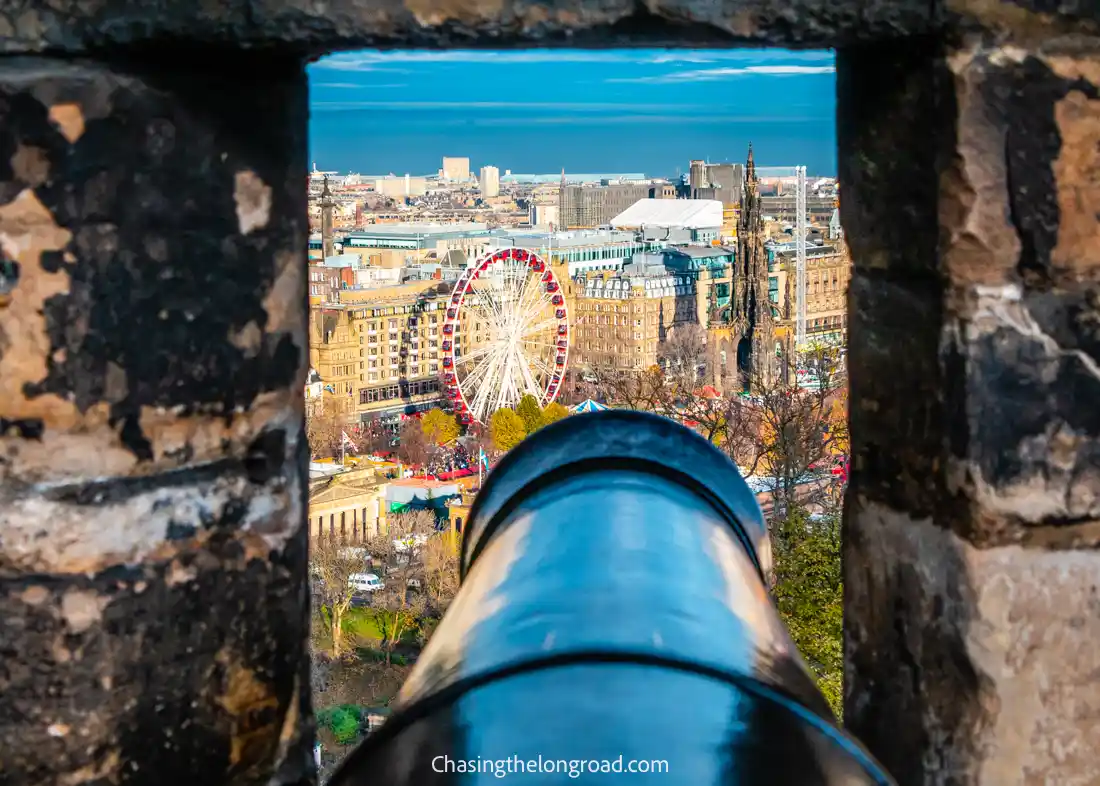
Stone of Destiny
Another legendary ancient object that resides inside the wall of Edinburgh Castle is the famous Stone of Destiny, a symbol of Scotland’s nationhood. For centuries it has been used for crowning Scottish Kings and later for English Monarchs.
In 1296, King Edward I of England took the stone from Scotland to Westminster Abbey and fitted it into a wooden throne.
On the morning of Christmas in 1950, a group of Scottish university students stole the stone from Westminster Abbey and brought it back to Scotland. The heist created a lot of buzz around that time.
Although the police took it back to London, the Stone of Destiny was officially returned to Edinburgh Castle in 1996. Today it can be seen in the Crown Room of the Royal Palace.
Mons Meg
The gigantic canon you see outside St. Margaret’s Chapel is known as Mons Meg. Named after the town in Belgium, where she was made in 1449, it is one of the largest cannons by calibre in the entire world.
Originally this was a wedding gift for King James II of Scotland from the Duke Phillip of Burgundy. Although Mons Meg can fire cannonballs weighing 150kg for up to 2 miles, moving this massive canon was difficult. It was used in battle until the 16th century, after which it was only fired on special celebratory occasions, like the marriage of Mary Queen of Scots in 1558.
Later around 1754, it was placed with other disused artillery and shifted to the Tower of London. But after Sir Walter Scott successfully campaigned to bring back Mons Meg to Edinburgh Castle, it finally returned in 1829.
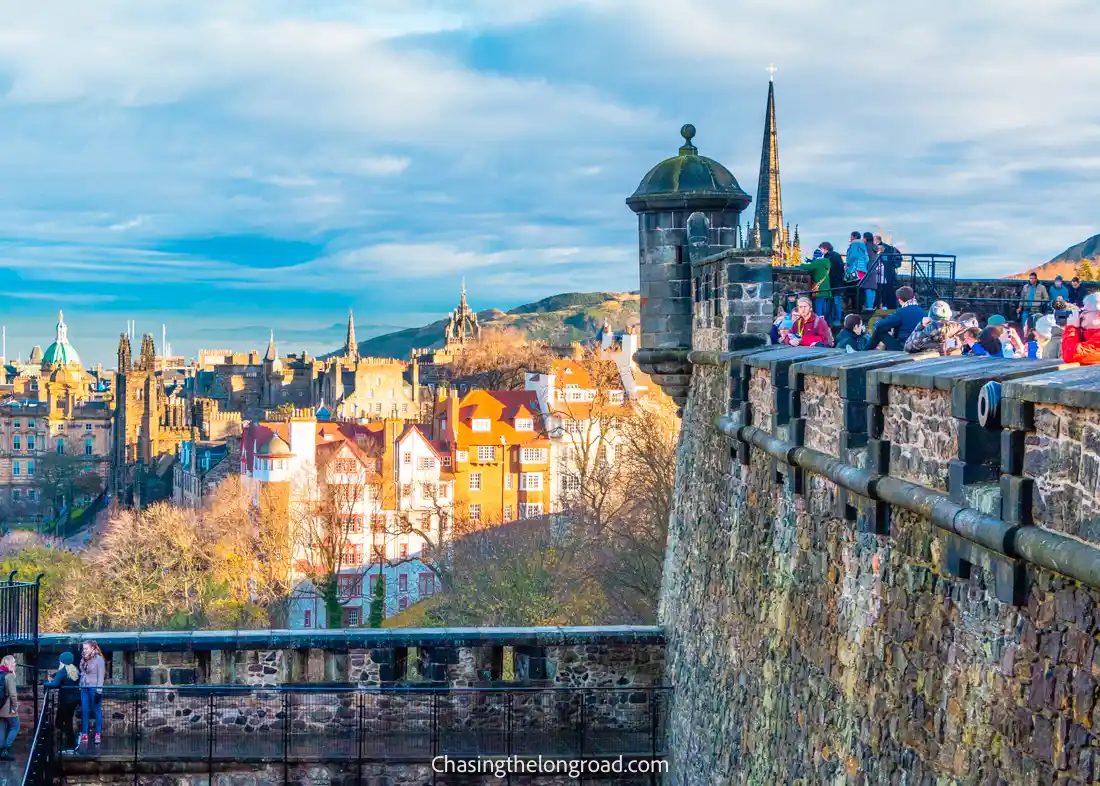
One O’clock Gun
The One o’Clock Gun was introduced in 1861 to notify time to the nearby passing ships on the Firth of Forth and the Port of Leith. The ship crew would then check the accuracy of their chronometers and adjust those accordingly. It was useful during fog and other low-visibility conditions.
There is another similar time signal nearby. The time ball on the top of the Nelson Monument on Calton Hill drops at 1 pm too.
Once a maritime timekeeper, the One O’clock Gun is now a beloved century-old tradition that occurs every day at 1 pm except Sundays, Good Friday and Christmas Day.
Try to time your visit to Edinburgh Castle with the famous One o’Clock gunfire ceremony at the Mills Mount Battery. The loud sound surely startles the oblivious visitors on Princes Street.
When is the Best Time to Visit Edinburgh Castle?
Honestly, there are no good or bad times to visit this medieval fortress. It can be visited all year round.
Summer: Summer months are the busiest time of the year for tourism in the city. With Edinburgh Fringe and Royal Edinburgh Military Tattoo going in full swing, the city gets overly crowded.
To avoid long queues, get your tickets to Edinburgh Castle online well in advance. We would suggest visiting here in the early morning or in the late afternoon to avoid the crowd.
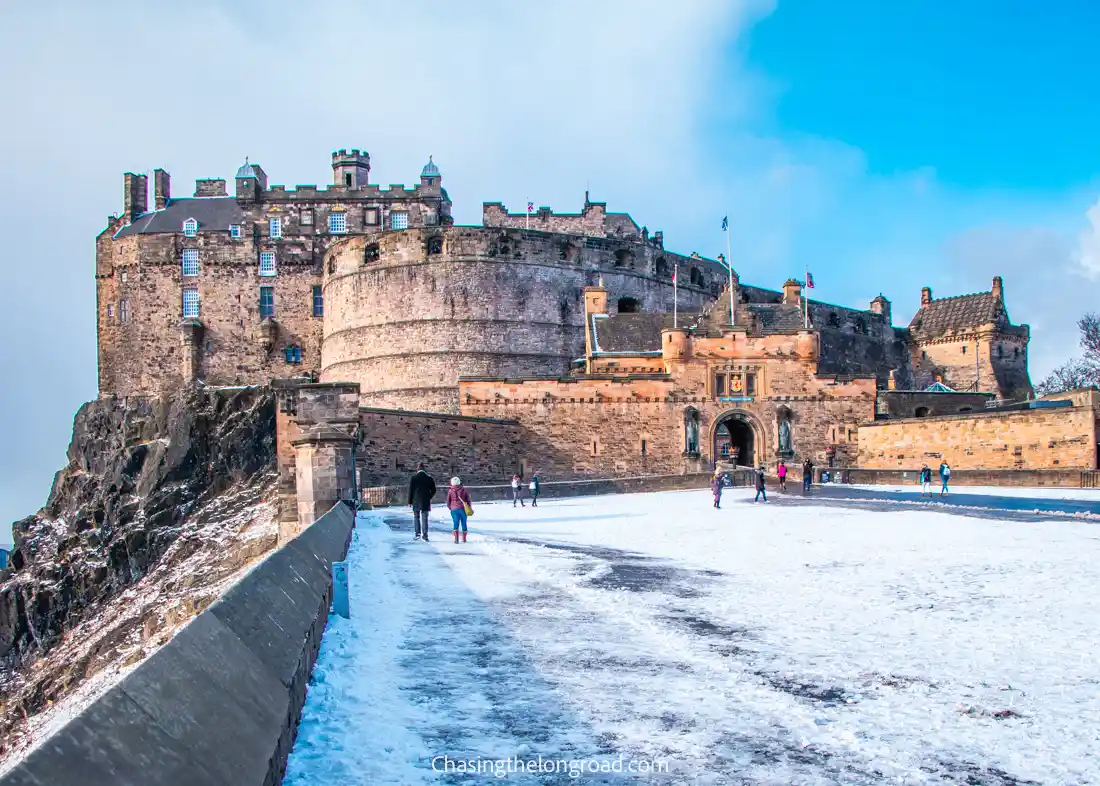
Spring and Autumn: Being shoulder seasons Spring and Autumn months are relatively less crowded. In Spring, temperatures are mild, and skies are relatively clear.
If you are visiting in Autumn, expect windy and sudden rain showers. But you will be blessed with spectacular autumn foliage all over the city.
Winter: If you don’t mind the cold, there’s absolutely no reason to avoid visiting Edinburgh Castle during winter.
The snow-covered fortress looks out from a fairy tale. Also, the city hosts one of the best Christmas markets in Europe. So, winter is a great time to be here.
Important Things to Know Before Visiting Edinburgh Castle
Opening Hours
Edinburgh Castle is open from 9.30 am until 6.00 pm, between 1st April to 30th September, with the last entry at 5 pm.
From 1st October until 31st March, the hours are 09.30 am to 5 pm, with the last entry at 4 pm.
It is open daily, except for the 25th and 26th of December.
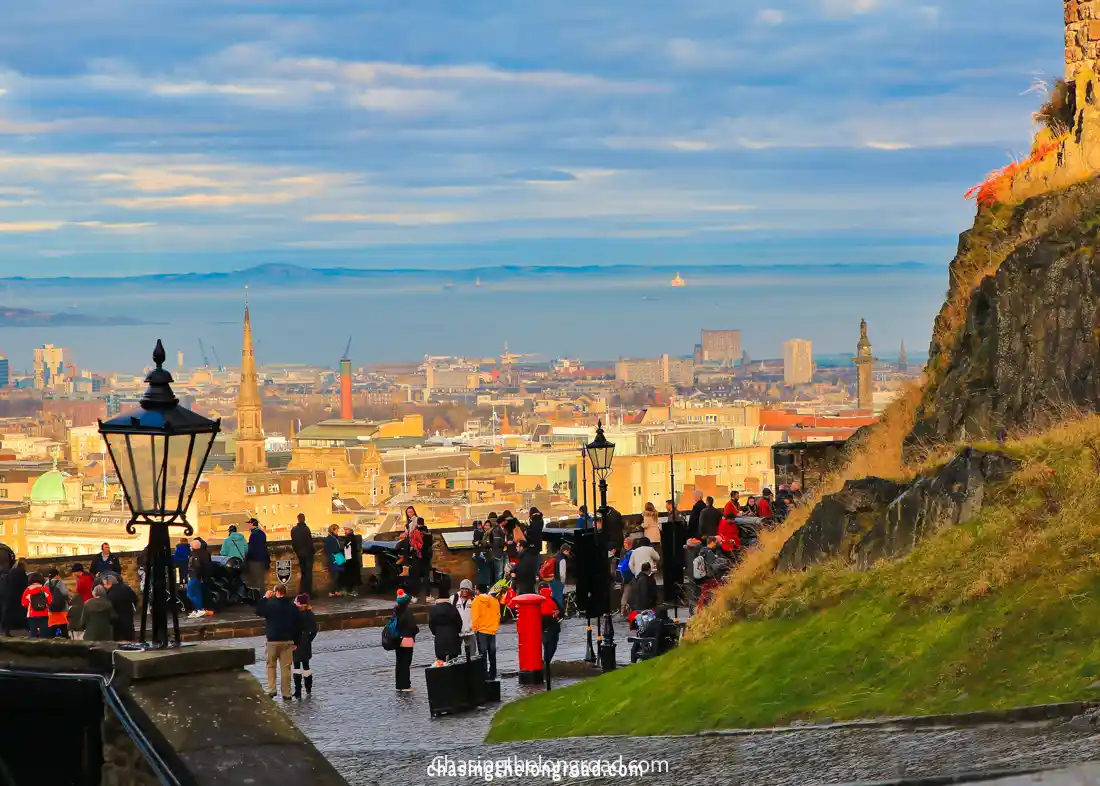
Ticket Prices
Edinburgh Castle ticket prices vary depending on the month of your visit. Also, online tickets are much cheaper than buying at the counter. Tickets often sell out completely during the peak seasons and holidays.
We will suggest reserving your tickets online far in advance. If the online slots are fully booked, then there will be no further tickets available at the Edinburgh Castle ticket counter.
Admission fees up to and including 31st March costs £18 online and £21 walk-up for adults. Tickets for a child (5-15 years) costs £11 online and £12.50 walk-up.
From 1st April onwards it costs £19.50 online and £22 walk-up for adults. Tickets for a child (7-15 years) costs £11.40 online and £13.20 walk-up.
Also, there are reduced entry prices for senior citizens and families.
Guided Tours
During the peak tourist season, guided tours are arranged by the Edinburgh Castle authorities. You don’t need to pay anything extra as it is included in your ticket price. Alternatively, you can pick up a map from the visitor centre and easily take a self-guided walk around Edinburgh Castle.
Also, there are dedicated custom itineraries on the official website, which you can follow. You can hire audio guides too. It costs £3.50 per adult. They are available in eight languages and explain the history and architecture of the fortress.
Accessibility
Travellers with disabilities or mobility issues would find Edinburgh Castle quite accessible. Disabled visitors can directly drive here and park at the castle esplanade. There are a limited number of spaces available for parking. So it is advisable to book in advance.
Two manual wheelchairs are available onsite in case you need it. Keep in mind there are some slopes and uneven surfaces throughout the fortress. But there is step-free access to the museums and cafes. Also, there is an accessible toilet at Crown Square.
How to Reach Edinburgh Castle
Edinburgh Castle is situated at the heart of Old Town, on the top of the Royal Mile. If you are staying near the city centre, you can easily walk up to Edinburgh Castle. Otherwise, you can catch local Lothian bus services to the Mound or George IV Bridge and walk a few minutes from there. Lothian bus services 8, 23, 27 and 41 stop at the Mound.
The nearest train station is the Edinburgh Waverley Railway Station. It is one of the largest railway stations in Scotland and is well-connected to all the main cities and towns of Scotland and England. There are regular train services from London as well. From Waverley Railway Station, Edinburgh Castle is a short walk away.
Places to Eat near Edinburgh Castle
Visitors can enjoy light snacks or a hearty lunch at Redcoat Cafe within the Edinburgh Castle premises. There is a decent selection of sandwiches, baguettes and bakeries.
You can indulge in the decadence of traditional afternoon tea experience at The Colonnades in the Signet Library. It is located within a very short walking distance from Edinburgh Castle and is one of our favourite places to enjoy afternoon tea in the city.
The Witchery is an upscale restaurant for a luxurious fine dining experience.
Visit the nearby Howies Victoria Street to taste some scrumptious Scottish dishes.
If you want to grab a quick lunch, then Oink serves tasty pulled pork sandwiches.
We hope this article about Edinburgh Castle has answered all your queries and you had a magical experience exploring the city. Let us know if we missed anything. Check out our other articles about Edinburgh to fuel your Scotland travel inspiration.
